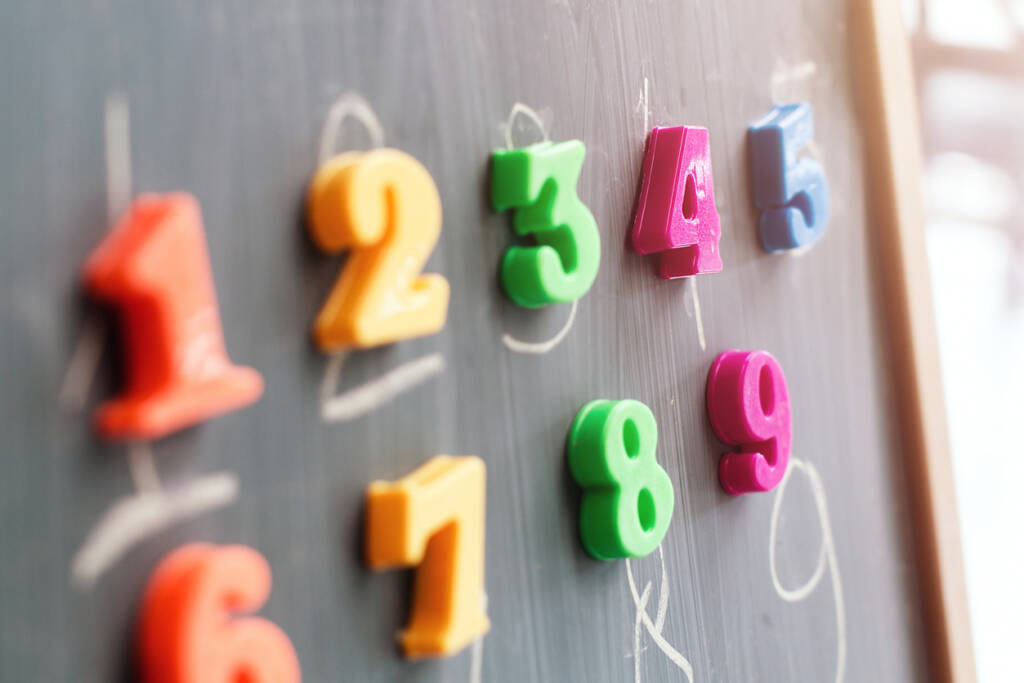
Elementary Math Grade 2

The elementary math courses inspire students to become critical thinkers and problem solvers. The learners use math as a tool to make sense of and understand the world around them. The courses include media that uses sight and sound to engage students. For example, rhymes, chants, songs, and videos help teach and practice foundational math skills. Students explore content prior to being explicitly taught and hands-on activities help strengthen the learners’ algebraic and critical thinking skills. Students are provided with many practice opportunities that involve both on-screen and off-screen activities.
Please view the Elementary Parents Guide for Grades K-2 with guidance on helping your student transition to online learning and thrive at VLACS.
Major Topics and Concepts
Segment One
Reading and writing numbers within 1,000
Rounding two-digit numbers to the nearest 10
Comparing numbers within 1,000
Adding within 100 using strategies
Subtracting within 100 using strategies
Adding two-digit numbers with regrouping
Subtracting two-digit numbers with regrouping
Using addition and subtraction to solve one- and two-step word problems
Using money to solve one- and two-step word problems
Telling time to nearest five minutes and quarter hour
Segment Two
Adding within 1,000
Subtracting within 1,000
Representing data using graphs
Drawing polygons
Categorizing polygons
Identifying a line of symmetry
Partitioning circles and rectangles
Estimating lengths
Measuring lengths
Using measurement to solve one- and two-step word problems
Finding perimeter with and without unit segments
Using repeated addition to find a total
Course Materials
To achieve success, students are expected to submit work in each course weekly. Students can learn at their own pace; however, “any pace” still means that students must make progress in the course every week. To measure learning, students complete self-checks, practice lessons, multiple choice questions, projects, discussion-based assessments, and discussions. Students and families are expected to maintain regular contact with teachers because, when teachers, students, and parents work together, students are successful.
Required Materials – Please view the list of materials before registering.
Competencies
Addition and Subtraction
I can explain the relationship between ones and tens when regrouping. I can solve two-digit addition equations with sums within 100 using rods and units. I can solve two-digit addition equations with sums within 100 using regrouping. I can solve two-digit subtraction equations with differences within 100 using rods and units. I can solve two-digit subtraction equations with differences within 100 using regrouping. I can explain the process of subtraction using place value.
Intro to Numbers to 1000
I can model three-digit numbers using place values. I can read numbers up to 1000. I can write numbers up to 1000. I can compare place value in three-digit numbers using greater than, less than, or equal to. I can select the order up to 1000 on a number line. I can explain the rounding of two digit numbers to the nearest 10.
Money
I can identify the value of individual coins. I can calculate the value of a mixed group of coins. I can calculate the value of a varied group of dollar bills. I can solve one and two step addition word problems involving money with sums within 100. I can solve one and two step subtraction word problems involving money with differences within 100.
Problem Solving
I can explain the calculation for proving an equation to be true or false. I can solve for an unknown number using different strategies. I can solve one-step addition word problems within 100. I can solve one-step subtraction word problems within 100. I can solve two-step word problems using addition. I can solve two-step word problems using subtraction.
Time
I can identify the time to the hour using an analog clock. I can identify the time to the half hour using an analog clock. I can write time to the nearest five minutes. I can explain half-past, quarter after, quarter past, and quarter to when telling time. I can explain a.m. and p.m when telling time.
Two Digit Addition
I can solve addition equations with a sum of 20 or less I can solve for a greater unknown two-digit number using place values. I can solve two-digit number addition equations with sums within 100 using a number chart. I can solve two-digit number addition equations with sums within 100 using skip counting. I can solve two-digit number addition equations with sums within 100 using place values. I can analyze a series of numbers to identify patterns. I can identify missing numbers in a series by recognizing patterns.
Two-Digit Subtraction
I can solve two-digit subtraction equations with the difference within 20. I can solve for a lesser unknown two-digit number using place values. I can solve two-digit subtraction equations with a difference within 100 using a number chart. I can solve two-digit subtraction equations with a difference within 100 using an open number line. I can solve subtraction equations with a difference within 100 using addition and an open number line. I can solve subtraction equations with a difference within 100 using a tens and ones mat.
Data
I can create visuals to represent data. I can solve problems using tally marks I can solve problems using pictographs. I can solve problems using tables I can solve problems using bar graphs.
Measurement
I can estimate lengths of objects using appropriate units of measure. I can select the appropriate tool to measure lengths I can calculate the difference between two different lengths. I can solve measurement word problems using addition and subtraction.
Perimeter
I can calculate the perimeter using unit segments. I can calculate the perimeter of a polygon using whole number side lengths. I can calculate the perimeter of a polygon after measuring the side lengths.
Shapes and their Attributes
I can describe two-dimensional shapes based on their attributes. I can categorize two-dimensional figures based on their attributes, including polygons and quadrilaterals. I can identify a line of symmetry for a two-dimensional figure. I can model the dividing of shapes into fourths, thirds and halves.
Three-digit Addition
I can solve equations when adding multiples of 10 to a three-digit number. I can solve equations when adding multiples of 100 to a three-digit number. I can solve addition equations with two 3-digit numbers and a sum within 1000 using place value. I can solve addition equations with two 3-digit numbers and a sum within 1000 using a number line. I solve addition equations with two 3-digit numbers and a sum within 1000 using flats, rods, and units. I can model regrouping tens or hundreds while adding. I can explain the process of an addition strategy.
Three-Digit Subtraction
I can solve subtraction equations when subtracting 10 and 100 from a 3-digit number. I can solve subtraction equations with a three-digit number and a difference within 1000 using a number line. I can solve subtraction equations with a three-digit number and a difference within 1000 using flats, rods, and units. I can model regrouping tens or hundreds while subtracting. I can explain the process of a subtraction strategy.
Working with Equal Groups
I can solve addition equations with two equal addends showing the sum as an even number. I can solve addition equations with two equal addends plus one showing the sum as an odd number. I can solve repeated addition equations to find the total number of objects in an array. I can calculate the total number of objects in an array using columns, rows and repeated addition equations. I can describe the use of an array to find the total number of objects.

